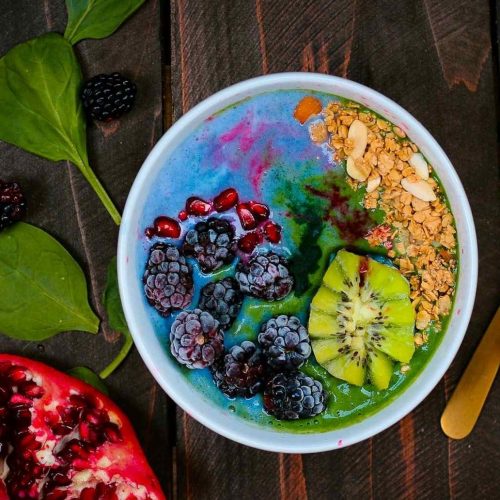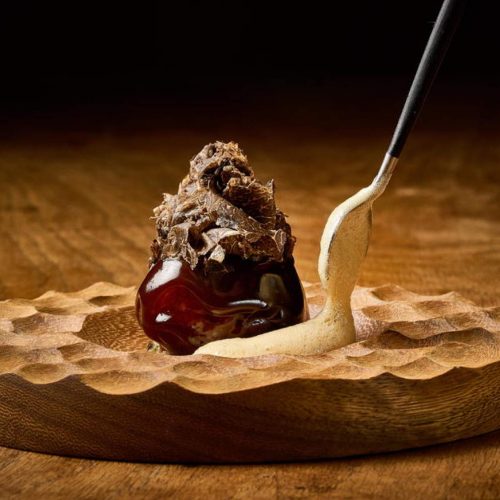Spring’s Seasonal Specialties
Spring has sprung, and with the change in climate comes a change in the plants that grow around us. Like the cherry blossom trees that flourish in the environmental conditions of Spring, certain fruits and vegetables grow particularly well at this time of year. Eating plants that grow in abundance is not only a more sustainable way of eating, it is usually healthier too. Locally grown sustainable produce is harvested without the use of harmful chemicals and does not require as much energy-demanding transportation to reach your plate.
Asparagus
Asparagus is a nutrient-rich vegetable with a unique taste and texture. As well as containing the vitamins A, C, E, K and B6 and the minerals folate, iron, copper and calcium, it also has fibre and protein. Asparagine, the amino acid found in Asparagus, is a natural diuretic which helps rid your body of excess salt and fluid. This also helps ease bloating and aids digestion. When cooked, the antioxidant effects of asparagus’ anthocyanins are heightened, making it even more effective in cancer-protection. Combining a healthy fat such as olive oil, avocado or nuts with asparagus will enable you to maximise your absorption of its fat-soluble vitamins. The fat-soluble vitamin E stimulates the production of sex hormones, promoting hormonal health, and vitamin B6 and folate make asparagus a natural aphrodisiac! The amino acids in asparagus are also believed to protect your liver from the toxins found in alcohol and relieve hangover symptoms.
The fat-soluble vitamin E stimulates the production of sex hormones, promoting hormonal health, and vitamin B6 and folate make asparagus a natural aphrodisiac! .
Eating asparagus may even help make you happier in general, as the high levels of folate and tryptophan are associated with a reduced incidence of depression and improved mood. Make sure not to overcook asparagus, particularly when boiling it, as this can destroy its beneficial nutrients or allow them to escape into the cooking water. Light steamed, sautéed, or roasted with a drizzle of olive oil transforms asparagus into a delicious nutrient-packed addition to any salad, flatbread or pasta dish.
Peas and pea shoots
Green peas are a leguminous vegetables packed with vitamins, minerals, phytonutrients, antioxidants and fibre. Fresh pea pods are also a good source of folic acid. The high fibre content of peas make them satiating, aiding in weight management. The antioxidant Lutein found in peas, together with their fibre, are believed to reduce cholesterol and the incidence of atherosclerosis and improve heart health. The phytosterols found in peas are also believed to help lower cholesterol levels. The Lutein and vitamin A in peas promote eye health while vitamin K promotes bone health. Vitamin A and vitamin C supply antioxidants to maintain healthy cell membranes and good skin and protect from harmful free radicals. In addition, peas contain many essential B vitamins and the minerals iron, copper, zinc and manganese. 1 cup of peas contains around 8g of protein, making them a good plant-based source of protein. The young leaves of the pea plant are harvested as microgreens known as pea shoots. Pea shoots are also high in antioxidants, with significantly higher concentrations of vitamin C and vitamin A than most recommended sources such as blueberries and tomatoes. As well as antioxidants, the chemoprotective agents that pea shoots contain include folate and carotene. Folate protects against DNA damage and maintains cell health while carotenes are linked to cancer prevention. Pea shoots can be added to salads, sandwiches and stir fries or simply used as garnishes for dishes such as soups and stews. Peas are delicious stirred into stews, curries and pasta dishes, blended into a soup, mashed into a puree or cooked with grains such as rice and quinoa.

Radishes
Radishes are part of the Brassica family of cruciferous vegetables. They are rich in antioxidants and other powerful plant compounds believed to help cancer prevention. They also contain isothiocyanates which interfere with the genetic pathways in cancer cells and can induce cancer cell death. By stimulating the production of bile, radishes promote a healthy liver, gallbladder and digestive system. The high fibre content of radishes aids weight management and prevents constipation. Radishes are detoxifying in that they help purify the blood and increase oxygen levels and their natural diuretic capacity increases urine production and cleans out the kidneys. Like all vegetables, radishes are also good sources of essential vitamins and minerals such as vitamin C, B vitamins, phosphorus, potassium and folic acid. Raw, thinly sliced radishes add a light crunch and flavour to salads. You could also add radishes to soups and stews or roast them in olive oil until crispy.
Strawberries
Like berries, strawberries are rich in vitamins, fibre and antioxidants including polyphenols. However, strawberries are actually a member of the Rose flower family as they are enlarged receptacles of roses. Strawberries are particularly strong antioxidants and good sources of vitamin C, potassium and manganese. As well as being a sweet, fat-free and low calorie treat, strawberries protect heart health, promote healthy cholesterol levels and protect against cancer. Strawberries are enjoyable on their own but also pair well with balsamic vinegar in both sweet and savoury dishes. You could top your breakfast bowls with sliced strawberries or mix them into salads with a balsamic dressing. For an indulgent yet healthy treat dip strawberries in melted dark chocolate and top with chopped nuts.
As well as being a sweet, fat-free and low calorie treat, strawberries protect heart health, promote healthy cholesterol levels and protect against cancer.
Rhubarb
Rhubarb belongs to the Polygonaceae family of plants. It is an excellent source of fibre, vitamin C, vitamin K, B vitamins, calcium, potassium, manganese and magnesium. In addition, rhubarb contains the polyphenols beta-carotene, lutein and zeaxanthin. The high calcium content of rhubarb promotes the maintenance of strong bones and teeth while lutein promotes eye and skin health. Antioxidants found in rhubarb such as lycopene and anthocyanins help prevent cancer and improve the health of your heart, eyes and immune system. The antioxidant capacity of rhubarb is enhanced when rhubarb is cooked, so to reap the full benefits of this tart fruit it should be stewed until tender. To add sweetness, stew rhubarb with other fruits such as strawberries and use as a topping for yoghurt, pancakes and porridge or serve with ice cream for a seasonal dessert on a sunny Spring day.

+ Words: Yasmin Razzaque
Yasmin Razzaque is a Biochemistry graduate with a keen interest in health and nutrition. She uses her scientific knowledge and ability to critically analyse research to write articles about healthy and sustainable eating and wellbeing.
Instagram: @yasminsophiya




